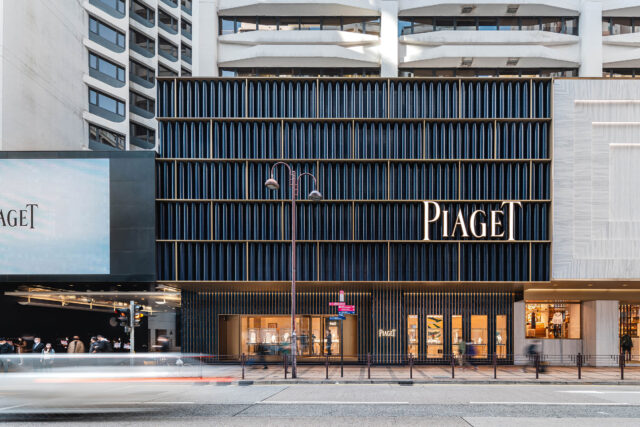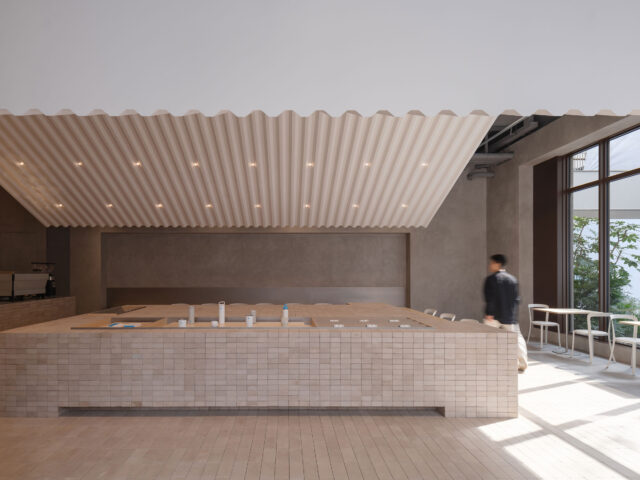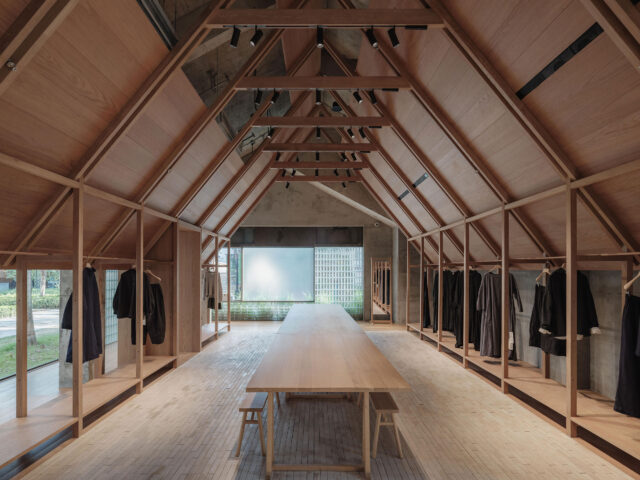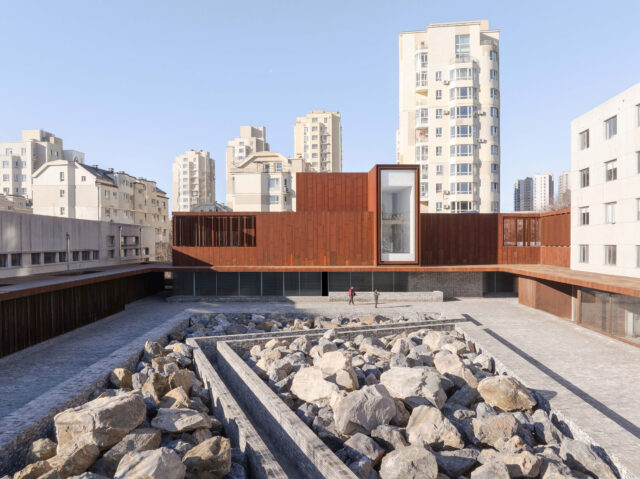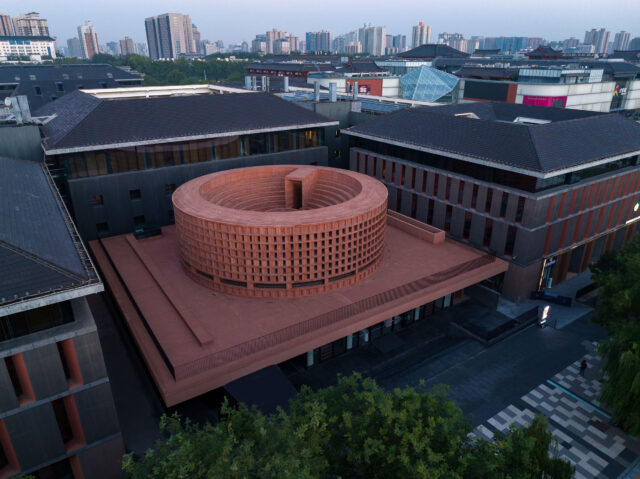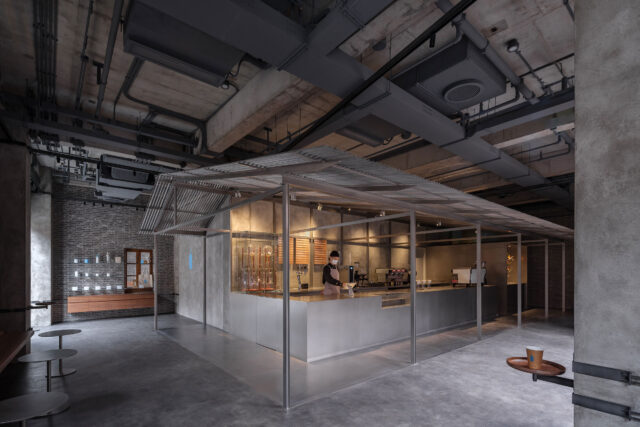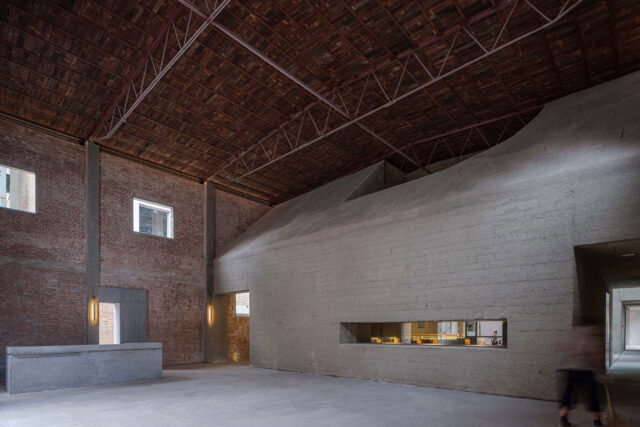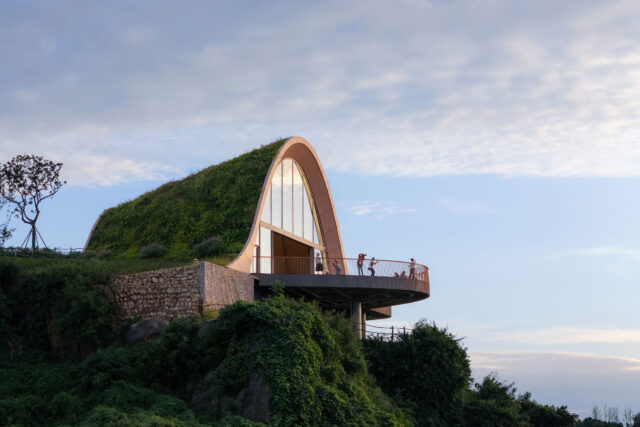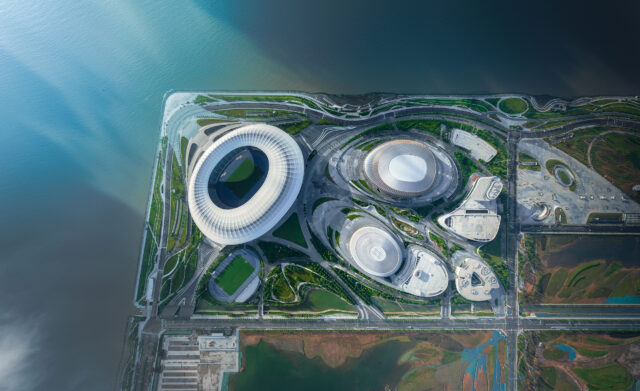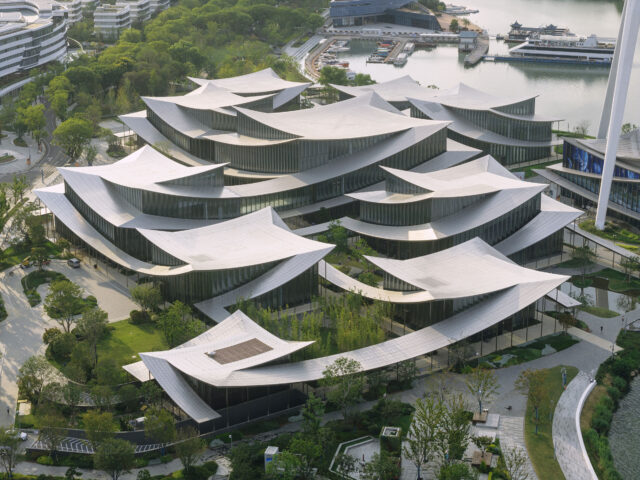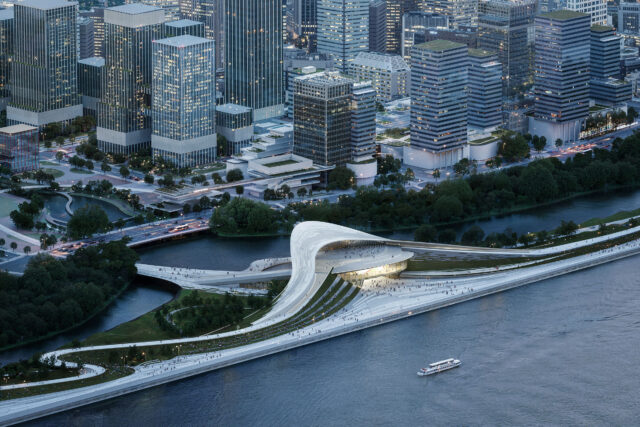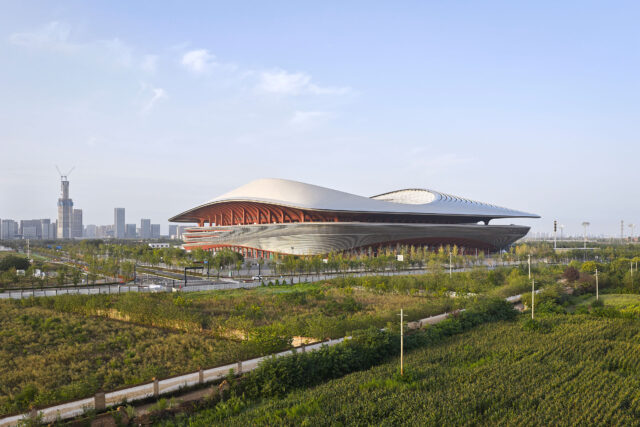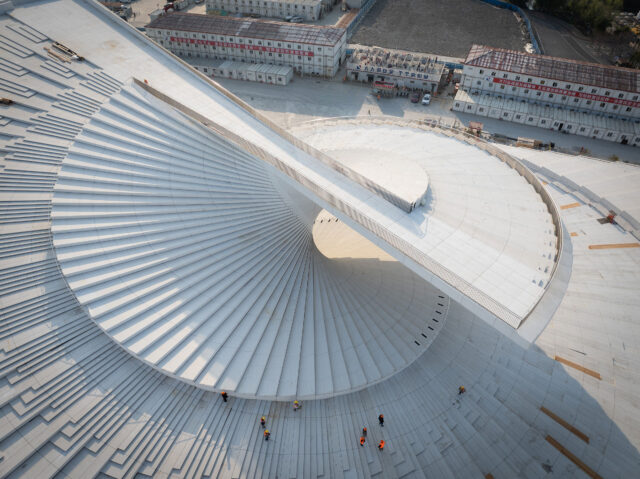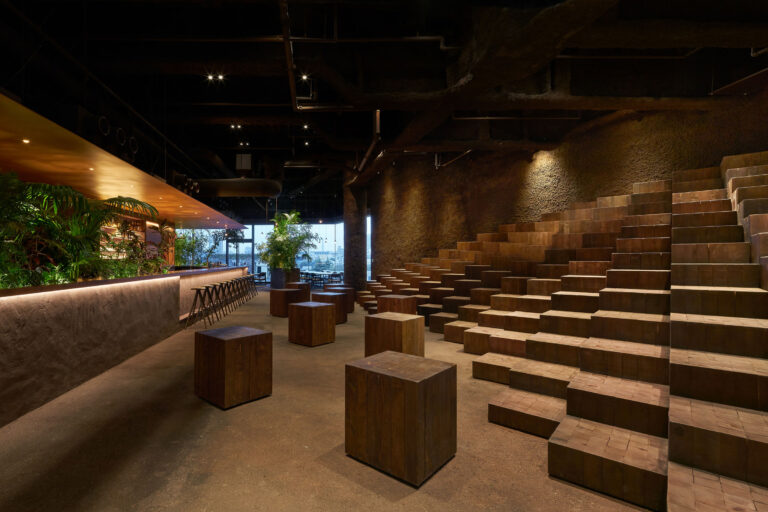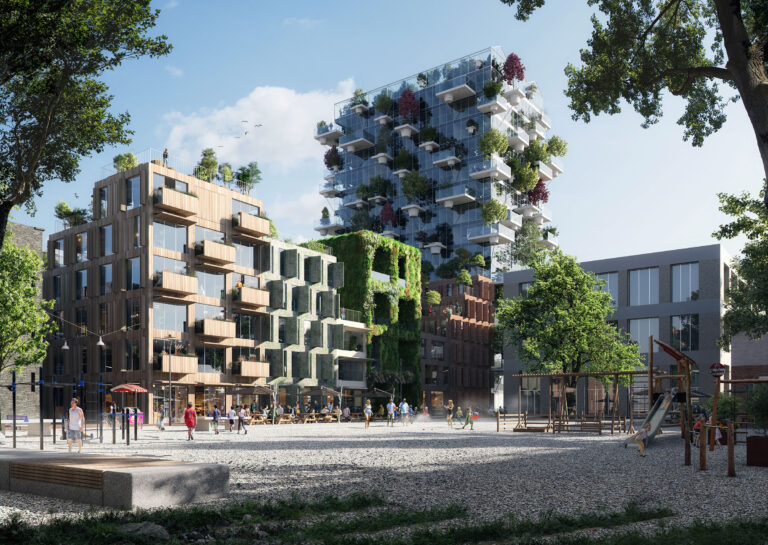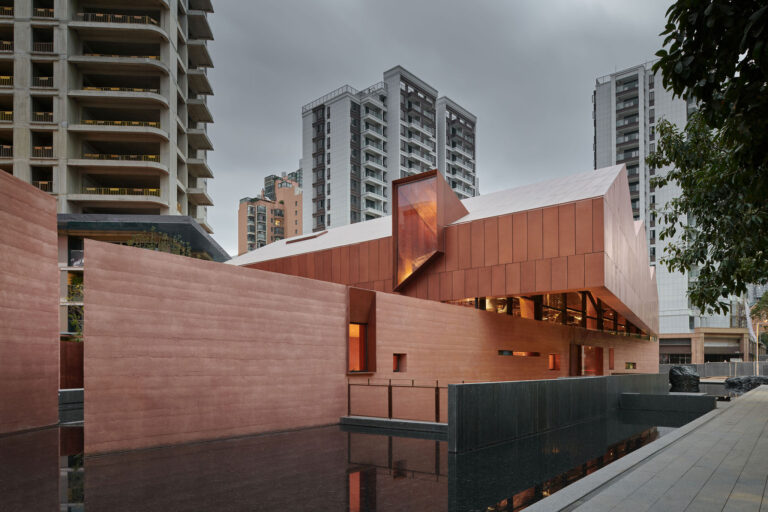
SHARE ネリ&フーによる、中国・福州市のティーハウス「The Relic Shelter – Fuzhou Teahouse」。古代住居の構造体を内包し、地域を象徴する寺院を参照した建築




ネリ&フーが設計した、中国・福州市の「The Relic Shelter – Fuzhou Teahouse」。古代住居の構造体を内包し、地域を象徴する寺院を参照した建築です。
こちらは建築家によるテキストの翻訳です。カッコ内は弊サイトによる補足
このプロジェクトでは、福州に特有のイメージである金山寺からインスピレーションを得ています。金山寺は、中国では珍しい川の中に建てられた寺院建築です。ジョン・トムソンは、中国を最初に訪れた写真家の一人であり、西洋の人々に極東の世界を初めて垣間見せてくれました。1871年、トムソンは伝説的な、びん江(※川の名前)の旅を記録したアルバム『Foochow and the River Min』の中で、浮いている岩の上に静かにたたずむ古代の建造物を、当時のままの姿で撮影しました。この写真は、福州の街を象徴する永遠のイメージとなりました。

「Relic Shelter」は、福州市の歴史的なルーツを反映した都市型アーティファクト(※文化遺産・芸術品)として構想され、急速な新開発によって伝統的な文化やアイデンティティが失われつつある現在、明確な遺産の一部を内包しています。クライアントからの依頼は、中国の遺物のための囲いを作るというユニークな課題でした。それは、装飾的な彫刻と複雑な接合部を持つ、清朝の高官住居の木造建築物です。安き省から福州に移築されたこの回族様式の建築物は、新しい茶館の中心に据えられています。
岩の上に建つ家をイメージしたこの茶館は、ラムドコンクリート(※版築のようなコンクリートのこと)の土台の上に建てられており、銅製の大きな屋根は囲われた建築物の屋根のラインを反映しています。中心となる素材のラムドコンクリートは、この地域の伝統的な土の家への現代的なオマージュであり、生々しいモニュメント性を強調しています。来場者は、建物に近づくと、直立したシルエットと、周囲の水溜りに映る鏡面の2つのイメージを目にすることになります。
古代の住居の構造体が置かれた大ホールに入ると、明るいものと暗いもの、軽いものと重いもの、粗いものと洗練されたものなど、さまざまな要素が対比されています。屋根には天窓があり、自然光が囲いの奥まで届き、展示されている貴重な品々を照らしています。中二階に到達して初めて、建物の構造的な構成が明らかになります。宙に浮いた金属製の屋根は、銅で覆われたトラスによって強固な土台から50cmほど持ち上げられ、その周囲に連続した照明の断片を導入しています。中2階のスペースは、歴史的な木造建築を包み込むように配置されており、訪問者は目線の高さで複雑な大工仕事のディテールを楽しむことができます。
地下1階には、円形広間、中庭、テイスティングルームを備えた第2の到着ロビーがあります。円形広間の最上部には、ガラスで覆われたオクルスがあり、中庭のプールの下に沈んでいます。薄い水の膜を通して太陽をろ過し、魅惑的な反射を生み出しています。
以下の写真はクリックで拡大します


















以下、建築家によるテキストです。
The Relic Shelter – Fuzhou Teahouse
The project draws inspiration from imagery uniquely associated with Fuzhou: the Jinshan Temple. This is a rare example of a temple structure built in the middle of a river in China. John Thomson was one of the first photographers ever to travel to the country and provided Western audiences with some of the first glimpses into the Far East. In the album Foochow and the River Min, which documented his legendary journey up the Min River, Thomson captured the ancient structure in its original state resting serenely above a floating rock in 1871. This would become a lasting image unmistakably identified with the city of Fuzhou.
Conceived as an urban artefact and drawing from the historical roots of the city of Fuzhou, the Relic Shelter internalizes a piece of distinct heritage at a time when rapid new development has eroded traditional culture and identity. The client’s brief posed the unique challenge of creating an enclosure for a Chinese artefact – the wooden structure of a high-ranking Qing dynasty official’s residence, replete with ornamental carvings and intricate joinery. Relocated from Anhui to its new home in Fuzhou, the Hui-style structure is enshrined as the inhabitable centrepiece of a new teahouse.
Envisioned as a house atop a rock, the teahouse is elevated above a rammed concrete base, while its sweeping copper roof echoes the roofline of the enclosed architectural relic. Its core material, rammed concrete, is a modern homage to the traditional earthen dwellings of the region, emphasizing a raw monumentality. Visitors are presented with two images of the building upon approach: the upright silhouette of the form, and its mirrored reflection duplicated in the surrounding pool of water.
A series of contrasts plays out among elements that are bright and dark, light and heavy, coarse and refined, as visitors enter the grand hall where the structure of the ancient residence is situated. Sky wells penetrate the roof, bringing natural light into the depths of the enclosure and illuminating the priceless artefact on display. Only upon reaching the mezzanine does the structural configuration of the building begin to reveal itself. The hovering metal roof is lifted 50 cm off the solid base by copper-clad trusses to introduce a sliver of continuous illumination around its periphery. Wrapping itself around the historical wooden structure, the mezzanine space allows visitors to appreciate intricate carpentry details at eye level.
The basement level includes a secondary arrival lobby housing a rotunda, a sunken courtyard and tasting rooms. At the top of the rotunda, a carved oculus capped by glass is submerged beneath the pool in the courtyard above. It filters the sun through a thin film of water, creating a mesmerizing play of reflections.



